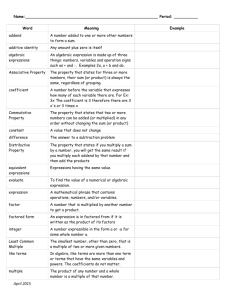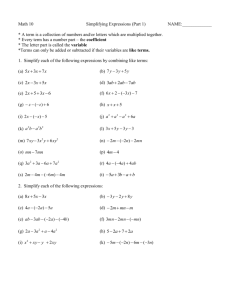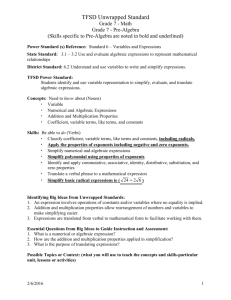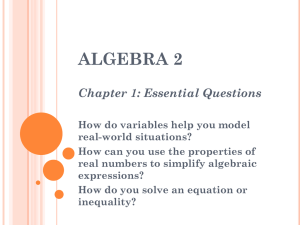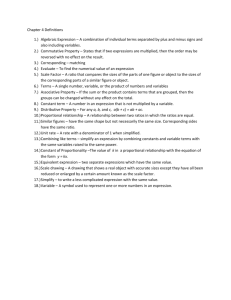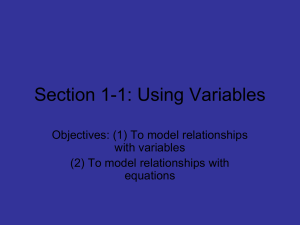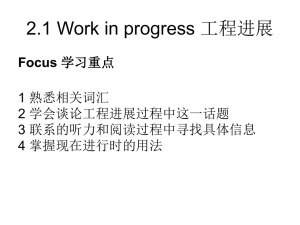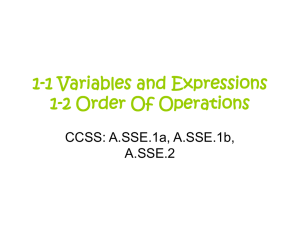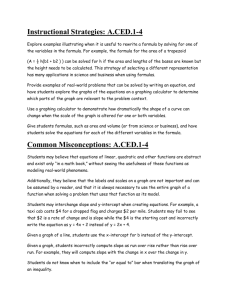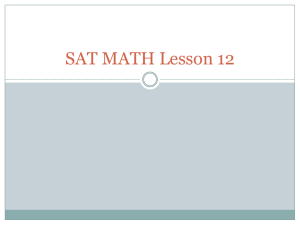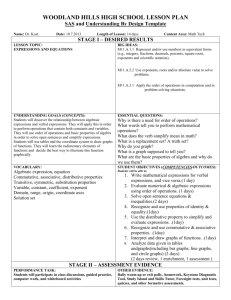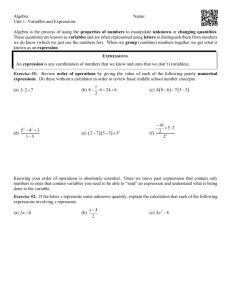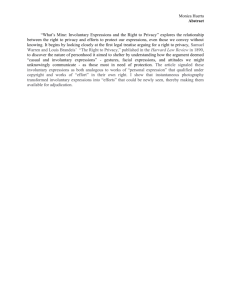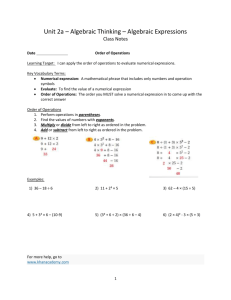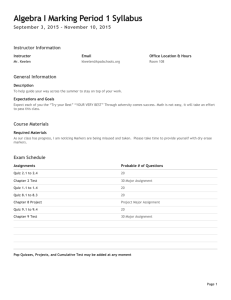Deconstructing Algebraic Expressions
advertisement
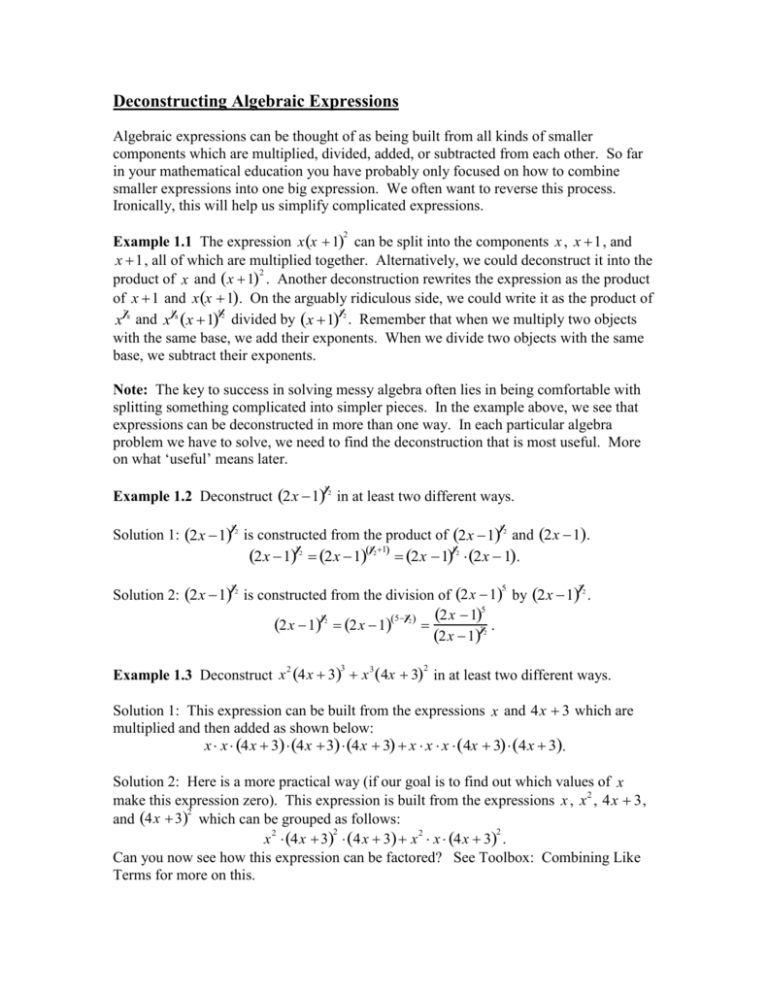
Deconstructing Algebraic Expressions Algebraic expressions can be thought of as being built from all kinds of smaller components which are multiplied, divided, added, or subtracted from each other. So far in your mathematical education you have probably only focused on how to combine smaller expressions into one big expression. We often want to reverse this process. Ironically, this will help us simplify complicated expressions. Example 1.1 The expression x x 1 can be split into the components x , x 1 , and x 1 , all of which are multiplied together. Alternatively, we could deconstruct it into the 2 product of x and x 1 . Another deconstruction rewrites the expression as the product of x 1 and x x 1. On the arguably ridiculous side, we could write it as the product of 1 5 1 7 x 8 and x 8 x 1 2 divided by x 1 2 . Remember that when we multiply two objects with the same base, we add their exponents. When we divide two objects with the same base, we subtract their exponents. 2 Note: The key to success in solving messy algebra often lies in being comfortable with splitting something complicated into simpler pieces. In the example above, we see that expressions can be deconstructed in more than one way. In each particular algebra problem we have to solve, we need to find the deconstruction that is most useful. More on what ‘useful’ means later. Example 1.2 Deconstruct 2x 1 2 in at least two different ways. 3 Solution 1: 2x 1 2 is constructed from the product of 2x 1 2 and 2x 1. 3 1 1 2x 1 2 2x 1 21 2x 1 2 2x 1. 3 1 Solution 2: 2x 1 2 is constructed from the division of 2x 1 by 2x 1 2 . 3 2x 15 57 2x 1 2 2x 1 2 7 . 2x 1 2 5 3 7 2 3 Example 1.3 Deconstruct x 4x 3 x 4x 3 in at least two different ways. 3 2 Solution 1: This expression can be built from the expressions x and 4x 3 which are multiplied and then added as shown below: x x 4x 3 4x 3 4x 3 x x x 4x 3 4x 3. Solution 2: Here is a more practical way (if our goal is to find out which values of x make this expression zero). This expression is built from the expressions x , x2 , 4x 3 , 2 and 4x 3 which can be grouped as follows: 2 2 x 2 4x 3 4x 3 x 2 x 4x 3 . Can you now see how this expression can be factored? See Toolbox: Combining Like Terms for more on this.
